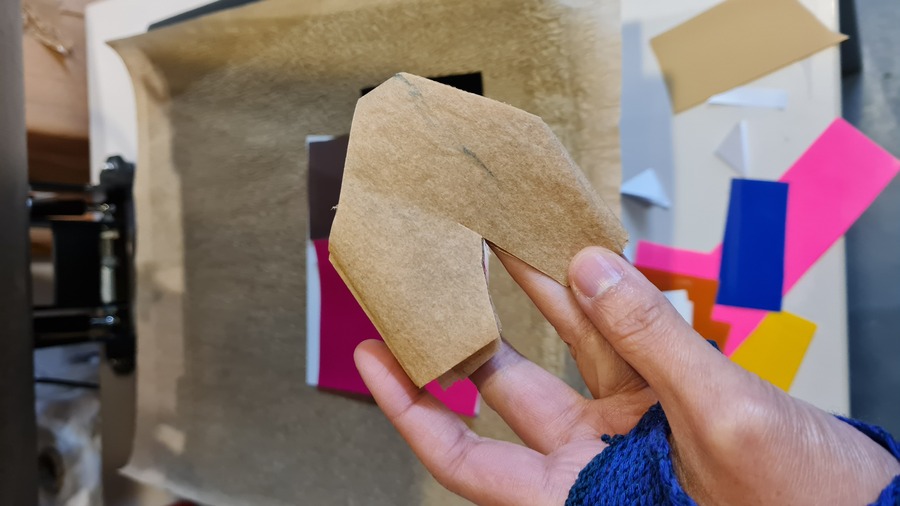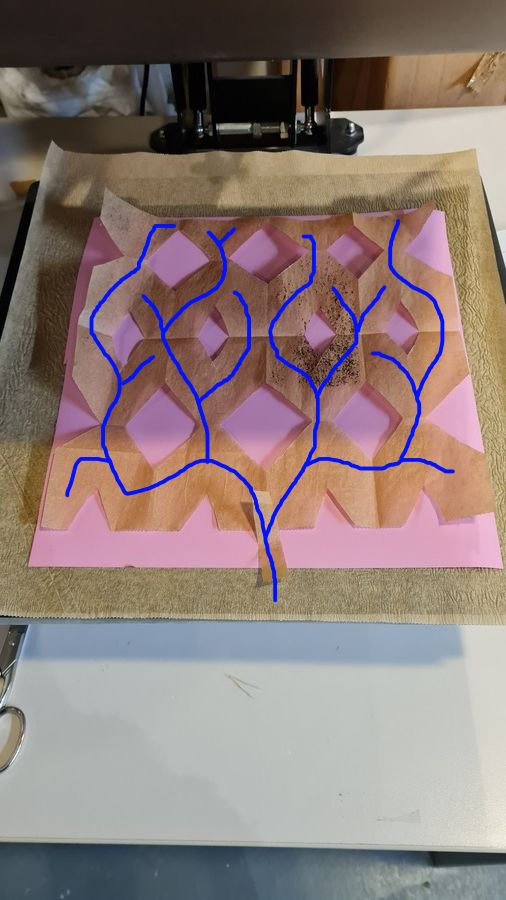9. Soft robotics¶
References¶
Inflatable bike airbag¶
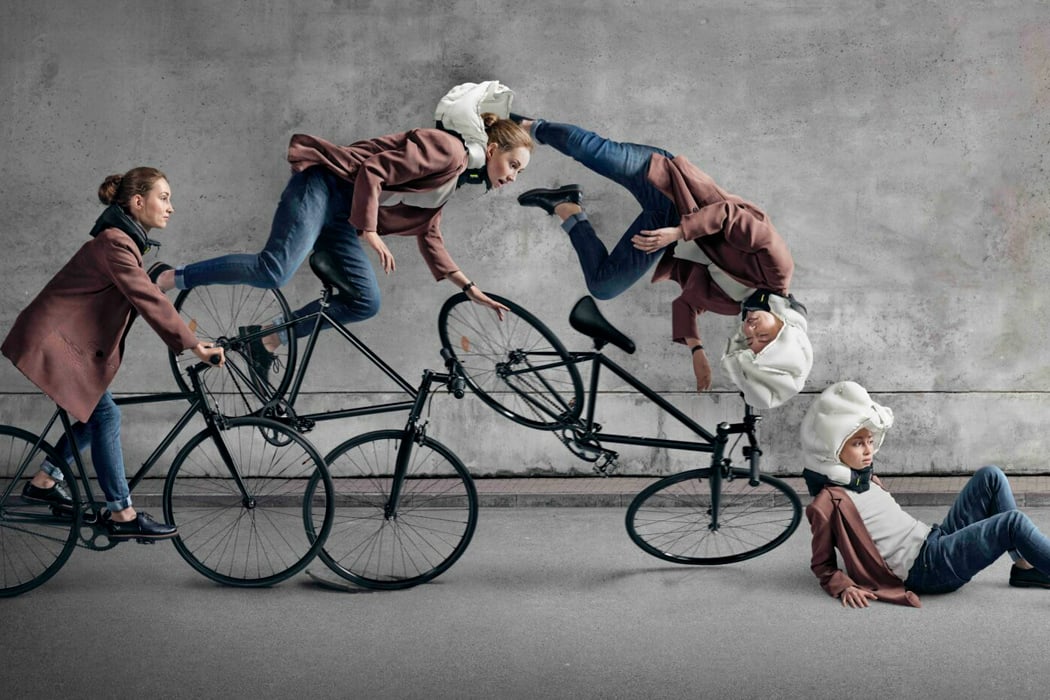
Samuel Poincloux¶
Samuel Poincloux is a French researcher in physics. He studied the physical properties of the knit stitch and how it could be used in engineering. The video is in French but his papers are available on the web in English as well.
Saskia Helinska¶
Saskia Helinska, Fabricademy 2022
Alberte Bojesen¶
Alberte Bojesen’s inflatables, Fabricademy 2023.
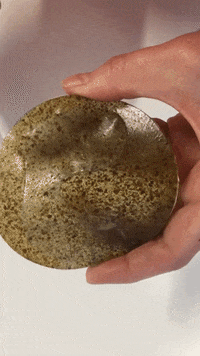
Elzelinde van Doleweerd¶
Elzelinde van Doleweerd’s shape-changing edible material with the restaurant Alchemist** in Copenhagen.
Instagram post embedding not available.Watch it on Instagram
Marion Pinaffo & Raphaël Pluvinage¶
This duo of artists/engineers is so inspiring. They conceive animation but in the physical space, inventing mechanisms to activate and animate shapes, sounds… I especially love that they replaced electric energy by non-electric energy like sand, wind…
Instagram post embedding not available.Watch it on Instagram
Jean-Simon Roch¶
Jean Simon Roch is an artist working on automated sceneries. I am in love with those earplugs dances:
Instagram post embedding not available.Watch it on Instagram
Étienne Mineur¶
Instagram post embedding not available.Watch it on Instagram
opensoftmachines.com mini-extensible-pneumatic
3D printed mechanics¶
Instagram post embedding not available.Watch it on Instagram
Instagram post embedding not available.Watch it on Instagram
KnitSkin¶
Machine Knitted Scaled Skin for Locomotion: https://www.hybridbody.human.cornell.edu/knitskin
Traditional ways of sealing plastic bags¶
Aeromorph¶
https://tangible.media.mit.edu/project/aeromorph/
Ana Piñeyro¶
Ana Piñeyro explores the kinetic potential of nylon monofilament. She also explores the movements of wool.
Soft Circuit Toolkit¶
Soft Circuit Toolkit is a breadboard, just like in electronics, but working with air. You can prototype easily air circuits. I find it mind-blowing as it is much easier to understand how a breadboard works with air rather than electronics.
Open Soft Machines¶
Open Soft Machines is a blog publishing small tutorials on soft machines. I love its aesthetics and the fun techniques they share.
<!– NOTES FROM CLASS
embroidery + casting
magnets serpentin electrolyse lego pump balloon
origami cube montessori avec fil qu'on tire
sablier air/eau
CO2 avec vinaigre + bicarbonate levure + sugar+ vinegar + beer
solenoid air pumps water valve
knit skin https://www.hybridbody.human.cornell.edu/knitskin
bioplastic sealed with heat
2 feuilles de plastique → découpeuse laser
–>
what's a muscle? an elastic? contraction+expansion
Kirigami-inspired gripper¶

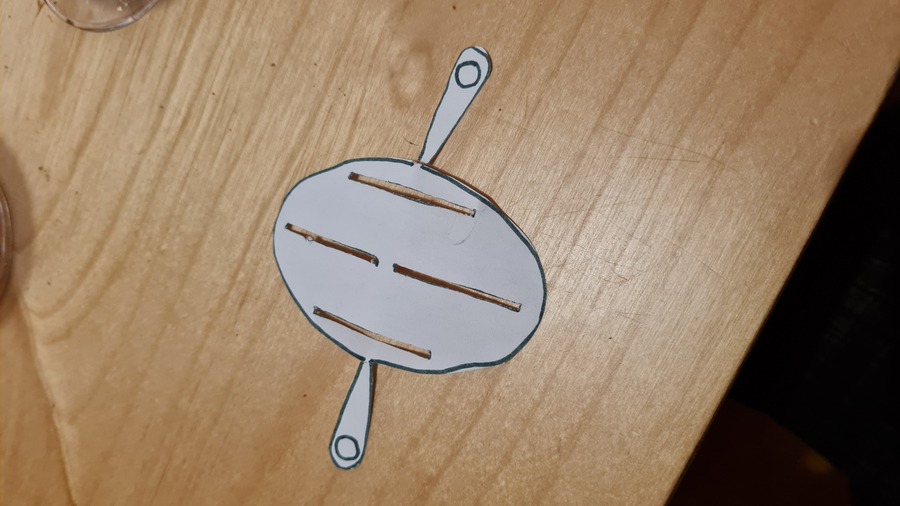
This first gripper was working really great, but after playing with it too much, it broke quite fast. The little articulations are too thin. I made another version with a thicker paper, but as it is too thick (first test in the video below), it has a hard time to bend and grab stuff. I came back to an ordinary A4 paper and made the junctions larger and it works fine again.
Source file to reproduce: Kirigami gripper SVG
Plastic inflatables¶
Inflatable made with an plastic sleeve for paper and hand-stitching. It kind of worked, but probably the material was too stiff and the air could go out too much.

Inflatable made with cellophane (food plastic wrap) and hand-stitching. Here the space between the two sheets is bigger and the material is less stiff, so it worked much better than the previous experiment.
Inflatable made with an plastic sleeve for paper and an iron (either for soldering or to iron clothes). Use a parchment paper to protect your tool.

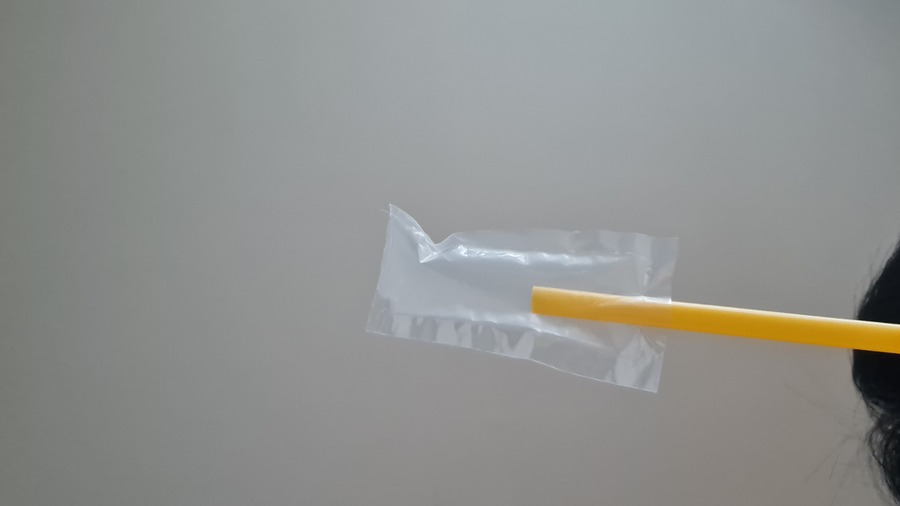
Yarn Mc Kibben muscle¶
Testing the stretchness of two yarn samples. The top one is knitted with a larger tension than the bottom one and therefore stretches much more.
Attempt at making a muscle out of knits and air pocket. It is not working. Probably the difference in tension between the two layers is not important enough and the muscle did not bend. Thus I added a woven fabric inside to have more tension in the muscle.


It is still not very convincing…
Nylon muscle¶
As I love spinning fibers, I was really curious to experiment with nylon monofilament and overtwists it to change its physical properties. Sadly I didn’t have much time to experiment with it. It was rather difficult to find a good method. So far those are the more helpful explanations about the process.
Process
- cut a length of nylon monofilament
- attach it to the starter of the spinning wheel
- attach the other end to a stick for easie manipulation
- start spinning
- keep the starter thread in front of the wheel
- you can turn the speed high at the beginning
- after a short while, lower the speed
- once you feel it's pulling towards the wheel, slowly go forward with your stick
- if you don't go fast enough, there will be too much tension and the thread will break
- if you go too fast, it will do "pigtails"
The documentation I consulted say that once we get our overtwisted thread, we need to "set it", to let the thread memorize its new shape in a way. As they use a drill and a weight, they recommend to add 50% of weight, or to untwist a little but not too much. I tried the latter, but it's difficult to know what's enough and what's "not too much".
The overtwisted thread didn't really work as a muscle to lift up weight, but it does come back to its overtwisted state when elongated and heated up afterwards. So it's still quite interesting and deserve more tests.

Vynil sheets¶
I made an inflatable with baking paper sandwiched in 2 layers of vynil sticker sheets. I cut the parchment paper by folding it in 4 and cutting triangles. The baking paper is the area where your air will flow.
